Vorticism Art – A Vibrant New World of Modern Art
What is Vorticism art, and what are the characteristics of this interesting dynamic art style? The vibrant world of Vorticism was founded on one of the most groundbreaking art movements of the 20th century in Britain. This group of avant-garde artists united to challenge tradition and explore the modern esthetics of their time. Vorticism tended to sway towards sharp geometry across various mediums to create a vivid image of the atmosphere of modernity at the time. In this article, we will explore the fascinating realm of Vorticism, as well as a few of its key artists and examples of what Vorticism art looked like. Read on to learn more about Vorticism art!
Contents
An Introduction to Vorticism: Capturing Modernity
So what was Vorticism, and who were the key artists of this movement? Before we dive into defining Vorticism and its visual characteristics in visual art, it is recommended that you familiarize yourself with the context of the time. To do this, we will review the backdrop of Vorticism in the 20th century. Vorticism emerged against the backdrop of a vibrant bohemian summer in London around 1913 when artistic projects and transformative endeavors were undertaken by multiple artists and visionaries across London. One such artistic hub of modern creation was the avant-garde studio at Omega Workshops, which was conceived by Roger Fry in Fitzrovia, where many emerging artists sought to embrace a modern spirit toward art.

Roger Eliot Fry was a famous English critic and painter who was also a key member of the Bloomsbury Group. Fry was drawn to the visual languages of post-Impressionist art and advocated for increasingly abstract art. Alongside other talented artists like Cuthbert Hamilton, Wyndham Lewis, Frederick Etchells, and Edward Wadsworth, Fry used the workshop to build on ideas of avant-garde art. Wyndham Lewis was one such member of the workshop who became a prominent figure in English art circles since he was credited with establishing Vorticism. Who was Wyndham Lewis? Born Percy Wyndham Lewis, this famous Vorticism artist was a co-founder of Vorticism and was also a writer, critic, and painter. He also worked as an editor for the Vorticist magazine BLAST and published many novels until the 1950s.
Lewis was also a founding member of the post-Impressionist Camden Town Group, where he gained the acquaintance of Roger Fry, Clive Bell, and other members of the Bloomsbury Group.
Wyndham Lewis on Vorticism
So, what is Vorticism, and how did Wyndham Lewis approach the art style? Between 1913 and 1915, Lewis worked on a style in painting known as Vorticism, which referred to a style of geometric abstraction. The term Vorticism was pinpointed by Lewis’ friend Ezra Pound, who dubbed Lewis’ work as such. What were the characteristics of the original style by Lewis? Lewis infused influences of Cubism marked by strong geometric abstractions with the vibrancy of Futurist art. The function of his Vorticist works reflected the concept of modernity, with geometry and bold lines at the heart of modern critique. It is speculated that Lewis was perhaps influenced by the notion of process philosophy, which suggests that one can only truly experience real life through the processes and changes of becoming, also marked by “shifting relationships”.
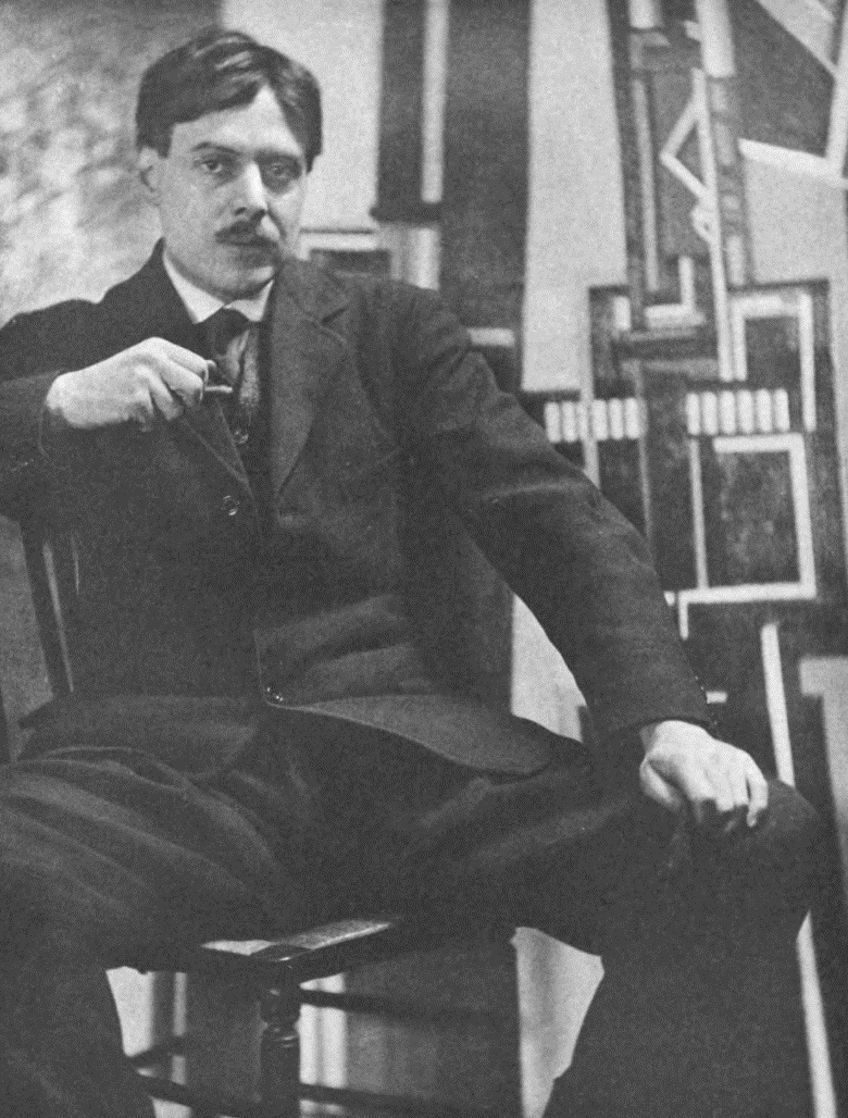
The philosophies of Friedrich Nietzsche also played an important role in shaping Lewis’ early works. Alongside his contemporaries from the Omega workshop, Lewis exhibited his works at the Brighton exhibition, where he met two prominent sculptors whom he later collaborated with. Lewis’s support for the Vorticism artists was fueled by his desire to highlight the shared purpose of the collective and described the group as “vertiginous but not exotic”.
The first Vorticist exhibition was held in the United Kingdom before the movement disbanded, largely due to the war, which had Lewis posted at the Western front, as well as fulfilling his duty as the Royal Artillery’s second lieutenant. Lewis spent the majority of his time in the First World War across Forward Observation Posts, which enabled him access to document the duels and steep misses of deadly artillery attacks.
In 1917, a patron of Lewis known as John Quinn held a Vorticist exhibition in New York at the Penguin Club despite the group’s dissolution.
The Manifesto of the Vorticists and the Rebel Art Center
Lewis did not remain with the Omega Workshop for very long after a quarrel broke out between Roger Fry and the Vorticist artist. This resulted in the establishment of a rival organization that was financed by Kate Lechmere. The organization that was established in 1914 was known as the Rebel Art Centre and was set up on 38th Great Ormond Street. The Rebel Art Center became a new platform where Lewis and his inner circle could share their ideas and notions about avant-garde art. Here, Lewis also provided a series of lectures and talks alongside Ezra Pound, the Futurist Filippo Tommaso Marinetti, and the novelist Ford Madox Ford. Filippo Tommaso Marinetti was already a prominent Italian artist who made his presence known in London in 1910 and joined Lewis in creating a new movement from the Futurist Manifesto.
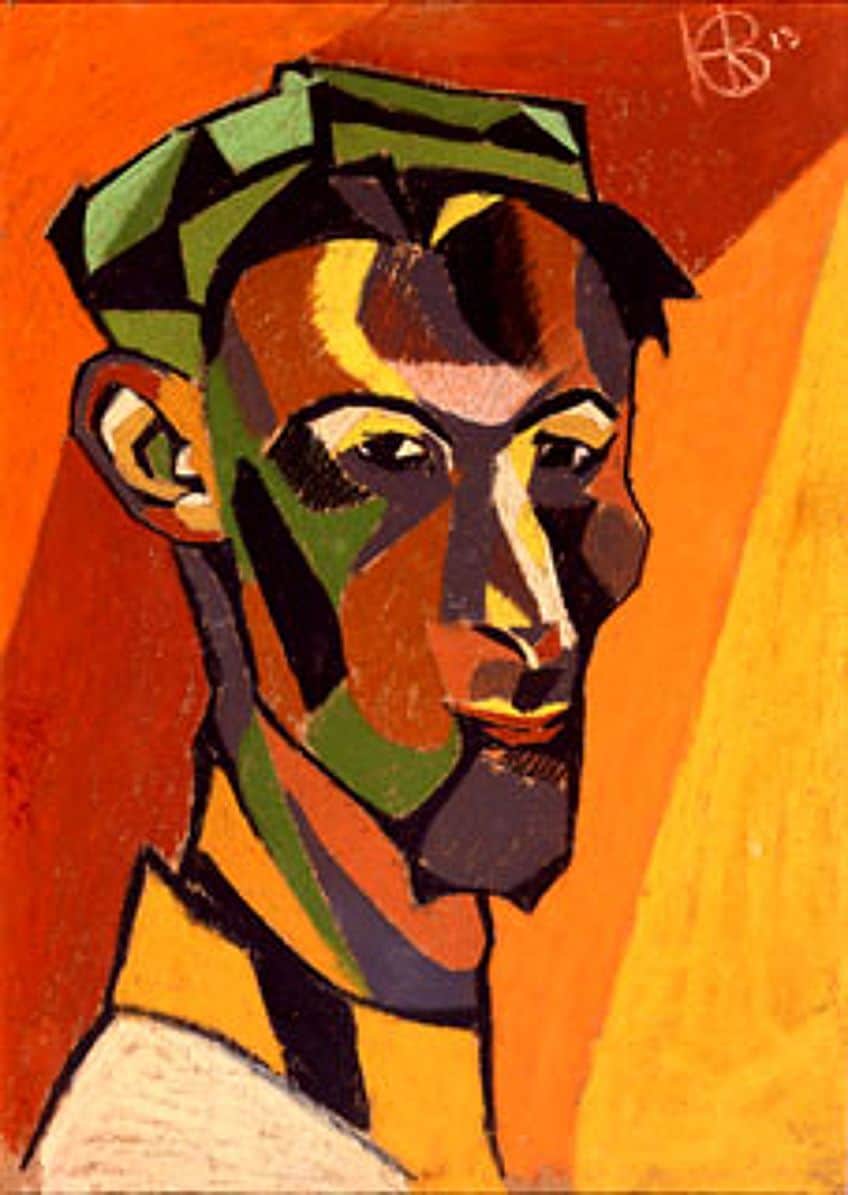
At this point, most shocking artworks circulated in London were described as “futurist”, including the works of the English artists, who explored Cubism. As such, there was a need to establish a more niche and critical movement that encompassed the abstract explorations of artists from the English art scene. Marinetti ended up teaming up with the Futurist artist C. R. W. Nevinson and published a new manifesto titled Vital English Art, which presented itself as an attempted takeover of the vorticist group. Lewis followed up a few weeks later by placing an advert in The Spectator to announce his publication of the Vorticist manifesto. This was crucial to establishing Vorticism as its abstract art movement since it ran parallel to Expressionism and Cubism but also attempted to take over the English art scene, and essentially wipe out Futurism and Impressionism.
The Vortex in Vorticism
The idea of the “vortex” was introduced in Vorticism by the American expatriate poet and art critic Ezra Pound in 1914 as a reference to modern poetry and art. He referred to London as the vortex of artistic and intellectual activity, which was connected to a more obscure meaning. The idea of the vortex was inspired by a point in a cyclone, where “energy cuts into space and imparts form to it”. It was further described as a pattern of geometric lines and angles that are created by the existing chaos of the vortex.
At the heart of Vorticism was also the idea of individualism, promoted by Lewis and the rebel artists.
Vorticist Sculpture and BLAST Controversy
The manifesto that was published in BLAST, inspired many artists to consider the new Vorticism movement as a way to explore other forms of abstract making in mediums like sculpture. In 1913, Ezra Pound encountered the French sculptor Henri Gaudier-Brzeska, whom he then collaborated with to form a concept known as the “new sculpture” as part of Vorticist sculpture theory. One of the criticisms of Vorticism and its emergence was its lack of representation and acceptance of female artists’ works. While artists like Jessica Dismorr and Helen Saunders joined the rebel artists, they were not respected by the male artists.
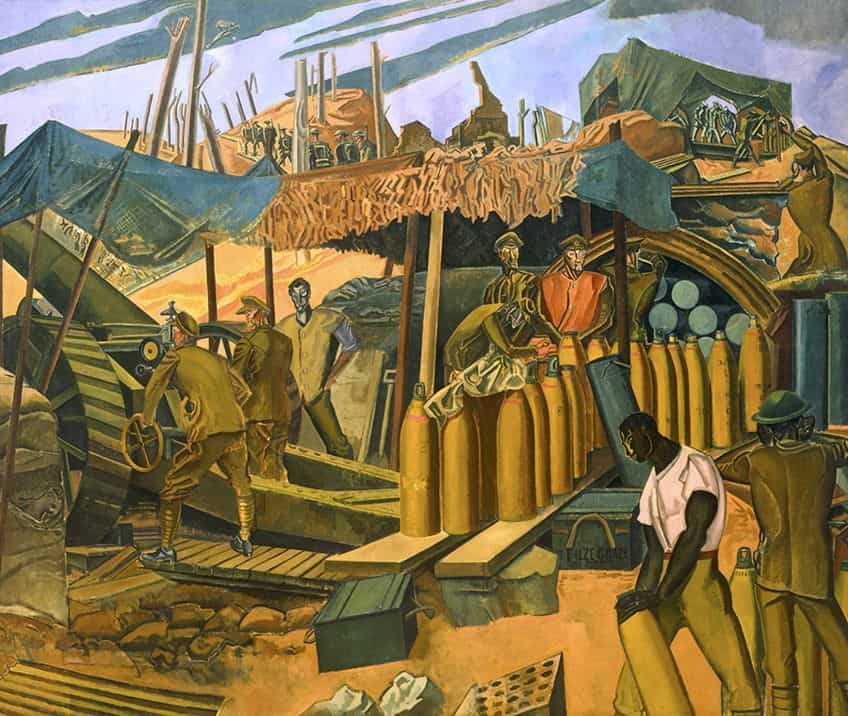
There was also controversy surrounding the publication of BLAST, which first launched at a dinner party in 1914 at the Dieudonné Hotel. The magazine was created by Lewis and featured poems and articles by various Vorticist members but also contained reproductions of the artists’ works. The manifesto inside was signed by 11 artists, however, most of the group were reportedly unaware of the contents of the publication before it was released.
Famous sculptors like Jacob Epstein were presumed to be “too established” to make the signatory list and David Bomberg threatened to take legal action against Lewis if his work was to be reproduced in the magazine. The Vorticists were also emerging at a period when there was not much attention given to avant-garde artists since Britain had just declared war on Germany. In a catalog foreword penned by Lewis, he stated that Vorticism was intended as an “Activity as opposed to tasteful passivity in Picasso’s work, significance rather than bland anecdotal Naturalist character, and as an essential movement likened to the energy of one’s mind over the imitative cinematography of Futurists”. While the Vorticists did not garner much recognition, they attempted another group show in the 1920s under the collective show Group X, which promoted modern art that could be more profitable in the market since there was a lack of patronage in the art world at the time.
This group show included a variety of evolving art styles from the Vorticists with additional artists such as Edward McKnight Kauffer, Charles Ginner, John Turnbull, and Frank Dobson joining the group.
Famous Vorticism Artworks
The energy of Vorticism was best captured by the bold lines and vivid geometric shapes often seen in many vorticist paintings. The movement, led by figures such as Wadsworth, Lewis, and Etchells, echoed the aesthetics of modern machinery and the technological fervor of the modern period.
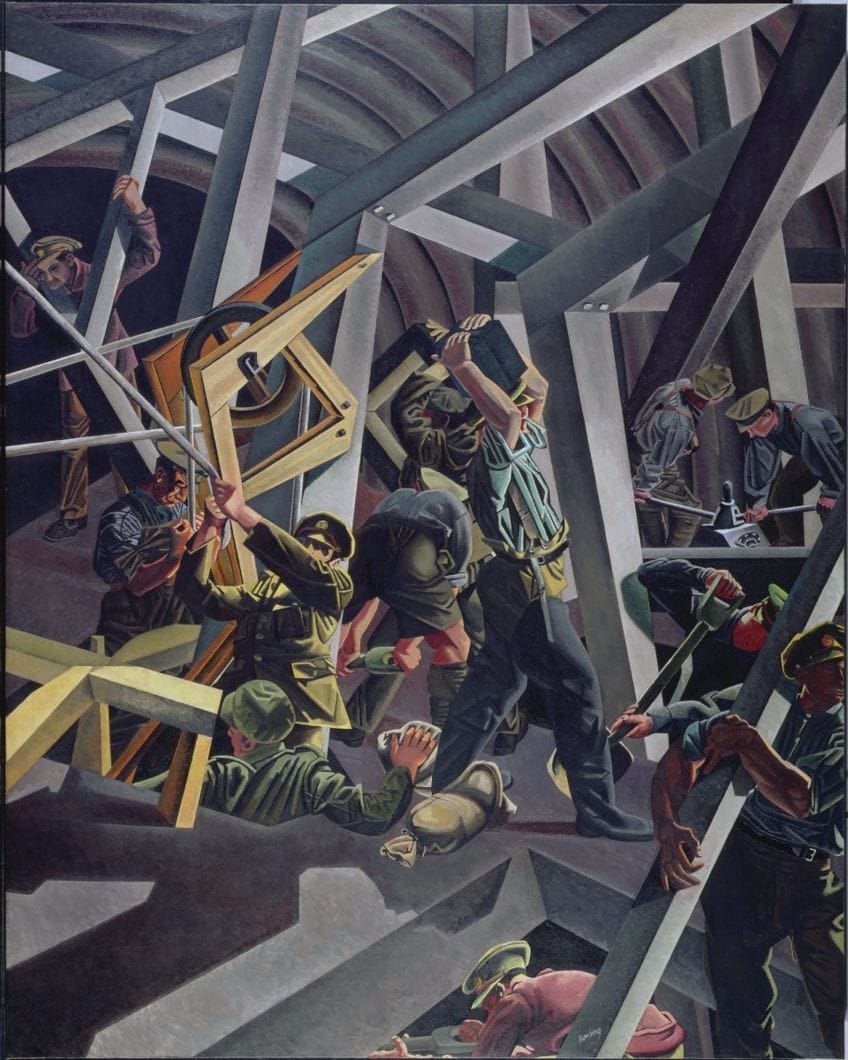
In conjunction with influences from Cubism and Futurist visual languages, the vorticists pursued their perspective on modernity with an angular intensity and although the movement was short-lived, its impact on the trajectory of modern art was seen as significant in terms of developing the art styles of abstraction within the English art scene. Below, we will take a look at some of the most famous examples of Vorticism art, which will provide you with insight into the visual characteristics and approaches of the vorticists.
Rock Drill (1913) by Jacob Epstein
| Artist Name | Sir Jacob Epstein (1880 – 1959) |
| Date | 1913 |
| Medium | Plaster figure mounted on actual rock drill |
| Dimensions (cm) | 205 x 141.5 |
| Where It Is Housed | Reproduction at Birmingham Museum and Art Gallery, Birmingham, United Kingdom |
Rock Drill was a famous Vorticist sculpture by Sir Jacob Epstein that was originally destroyed by the artist himself. The artwork was originally created using a plaster figure mounted on a rock drill as an example of a readymade artwork that symbolized radical modernism. While Epstein was not an official member of the Vorticism movement, his large sculpture was celebrated by the Vorticists as a work that captured the essence of Vorticism.
Today, a reproduction of the work remains at the Birmingham Museum and Art Gallery, and its complementary sculpture Torso in Metal from Rock Drill (c. 1913 – 1916) at Tate Britain in London.
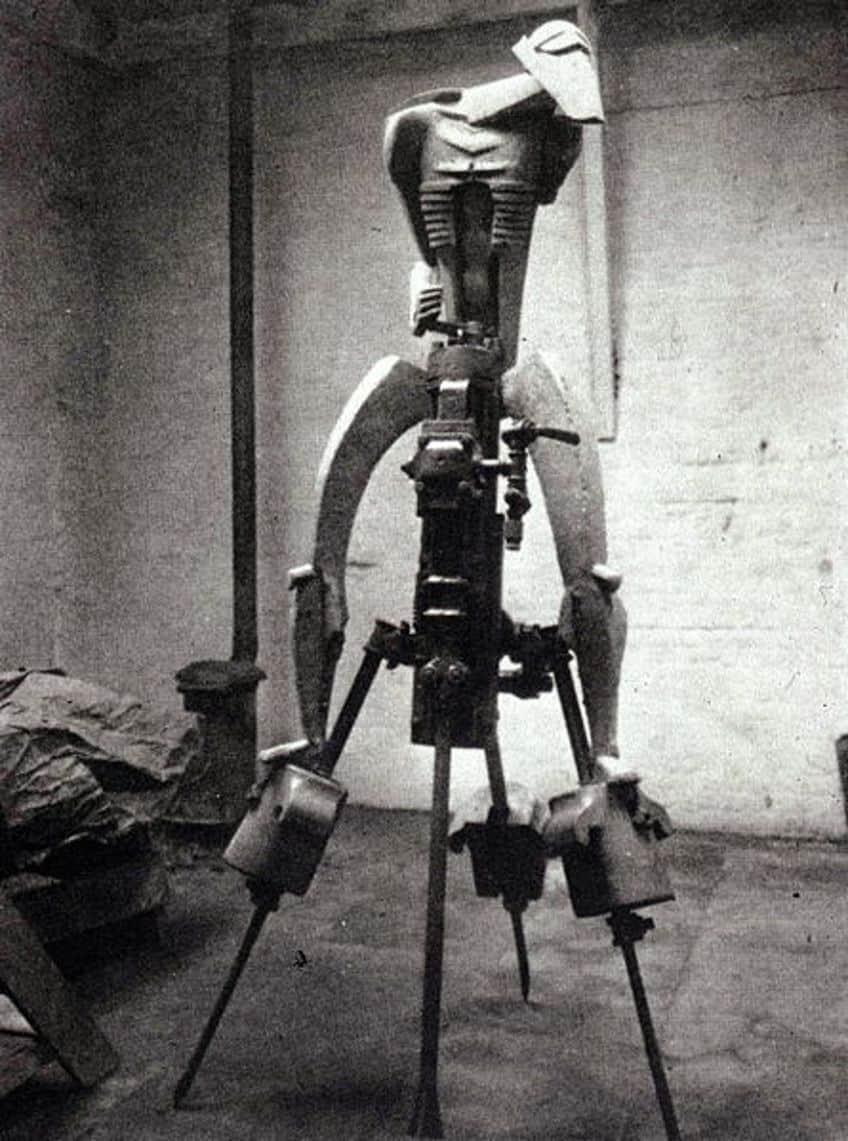
In 1913, Epstein also created a study for the sculpture in charcoal, which can be found in the Garman Ryan Collection at The New Art Gallery Walsall in the West Midlands. The male figure on the sculpture was also truncated and transformed into a symbol of the artist’s disengagement from the machine era which also reflects a melancholy surrounding the war when numerous injured soldiers returned from the trenches.
Red Stone Dancer (1913) by Henri Gaudier-Brzeska
| Artist Name | Henri Gaudier-Brzeska (1891 – 1915) |
| Date | 1913 |
| Medium | Red Mansfield stone |
| Dimensions (cm) | 43.2 x 22.9 x 22.9 |
| Where It Is Housed | Tate Gallery, London, United Kingdom |
Red Stone Dancer was perhaps one of the most famous Vorticism artworks of the movement. The red Mansfield stone sculpture was created by French artist Henri Gaudier-Brzeska, whose works incorporated the influences of different cultures. His interests spanned the art from ancient Greek and Assyrian cultures, as well as the stolen artwork from indigenous cultures across the world. Using these influences, Gaudier-Brzeska attempted to establish his own sculptural language that fused geometrical elements with figurative elements from the human body.
The twisting motion of the sculpture is said to offer a moment of contemplation that also captures the “pure form” ideated by Gaudier-Brzeska and his ideas on the bodies of dancers.
Simultaneously, he also explores the Vorticist language through the dynamism of the sculpture’s twisting form that uses the abstracted dancer’s figure to suggest continuous motion despite the solid nature of the material. Gaudier-Brzeska’s focus on movement reflected his belief that movement was the translation of life itself, that it should be reflected in art, and that we are only made aware of life through life’s movement. The artist also developed a direct carving technique inspired by the works of cultural artifacts from colonized lands, which he felt expressed contemporary inclinations and “modernity”. Ezra Pound had also worked with Gaudier-Brzeska on Vorticism sculpture theory and remarked that Red Stone Dancer was a thesis on pure form.
The Mud Bath (1914) by David Bomberg
| Artist Name | David Garshen Bomberg (1890 – 1957) |
| Date | 1914 |
| Medium | Oil on canvas |
| Dimensions (cm) | 152.4 x 224.2 |
| Where It Is Housed | Tate Britain, London, United Kingdom |
First shown at Chenil Gallery, The Mud Bath is among the most famous Vorticism paintings of the early Vorticist movement. The work was created by the esteemed British painter David Bomberg in 1914 and depicts a human figure, reduced in a Cubist fashion to its basic geometric shapes. Bomberg’s approach to Vorticism not only strips bare the human form but also draws on the machine age-inspired use of color by the Futurists.
The Mud Bath was also based on the East London steam baths, located near the artist’s home, and was primarily used by the local Jewish community.
Bomberg depicted the site as a space that was used for its spiritual and physical cleansing. In addition to the subject’s religious associations, Bomberg also relied on the notion of depicting the nude human form in a traditional bathing scene with a modern twist on the subject. Through a series of bold and striking geometric shapes, Bomberg’s composition describes his search for an intense form of expression, which leverages naturalistic forms that have been stripped away from unnecessary matter to establish a strong visual impression of modernity.
The Crowd (1914 – 1915) by Wyndham Lewis
| Artist Name | Wyndham Lewis |
| Date | 1914 – 1915 |
| Medium | Oil and graphite on canvas |
| Dimensions (cm) | 200.7 x 153.7 |
| Where It Is Housed | Tate Gallery, London, United Kingdom |
Leader of Vorticism Wyndham Lewis created this famous Vorticist painting entitled The Crowd between 1914 and 1915 and included it in a show alongside the London Group in 1915. The motif of a crowd was inspired by the First World War, which made Lewis question the role of manipulation and power and its association with crowds. In 1915, he also published an article in BLAST detailing his views on the subject.
The painting was also known to have accidentally acquired the title Revolutions after it was thought to have had associations with the 1917 October Revolution in Russia.
However, the painting simply represents an abstract view of a city with various stylized human figures. The architecture in the painting resembles the industrial architecture of the city with figures appearing to move away from the geometric enclosure of the edge of the city. The figures seen holding a flag have also been speculated to represent the inciters of the scene who spark the revolutionary action of the crowd.
Abstract Composition (1915) by Jessica Dismorr
| Artist Name | Jessica Stewart Dismorr (1885 – 1939) |
| Date | 1915 |
| Medium | Oil on wood |
| Dimensions (cm) | 41.3 x 50.8 |
| Where It Is Housed | Tate Britain, London, United Kingdom |
Jessica Dismorr was among the only female artists of the Vorticism movement, who created Abstract Composition around 1915. Dismorr was also one of the few painters of the 1930s to work in a completely abstract manner, thus making her an important pioneer of abstract art. According to art historians, Dismorr was drawn to Vorticism since it offered her a room to navigate city spaces like London, which were predominantly masculine.
In her engagement with such male-dominated spaces, including abstraction through vorticism, Dismorr challenged existing beliefs about female artists and the kind of art that they produced by focusing on abstraction.

When Dismorr created Abstract Composition, the artist also contributed to the last publication of BLAST, through her poems, notes, and illustrations. An interesting note on Dismorr’s work is the intersection of her poetry in conversation with the wartime architecture of the city, which was also described in her prose poem titled London Notes. Before Dismorr joined the Vorticism movement in 1914, she had been known to study under J. D. Fergusson and frequently traveled to France, where she created many representational paintings. In her previous work, she had already begun exploring vivid colors and decorative flat forms, which bled into her later works produced between 1914 and 1920.
Vorticism was a short-lived 20th-century art movement that significantly shaped the direction of abstract art in English art circles. There are many elements of the movement that one can use to critique concerning the inclusion of non-male artists, the use of European Primitivist styles in theorizing abstraction and modern art, and the notions of change and movement in life that reflected the strive toward “modernity”. In exploring the works of Vorticists, you can also begin to understand the thinking behind some of the most influential art movements that inspired modern artists. We hope that you are now motivated to engage in critical discussion around these topics!
Frequently Asked Questions
What Is Vorticism Art?
The genre of Vorticism artwork refers to art created under the 20th century London art movement called Vorticism. The movement was established in 1914 and was launched to the public through a Vorticist magazine known as BLAST. Vorticism art is known for its use of sharp angles, geometric forms, and bold colors, shaped by a fascination with the machine era and encompassed the art forms of painting, sculpture, design, literature, and typography.
Who Led the Vorticism Movement?
Wyndham Lewis was the pioneer of the Vorticism art movement in London in the early 20th century. Lewis developed the Vorticist style through painting and literature, focusing on industrial architecture, Cubism styles, and other industrial processes. Lewis is also recognized as the father of Vorticism.
Why Did Vorticism End?
The modernist art movement known as Vorticism ended due to the onset of World War One, which required some of the members to serve in the war. Although the movement was radical in its theory and thinking, it did not gain enough traction to sustain itself.
Jordan Anthony is a Cape Town-based film photographer, curator, and arts writer. She holds a Bachelor of Art in Fine Arts from the University of the Witwatersrand, Johannesburg, where she explored themes like healing, identity, dreams, and intuitive creation in her Contemporary art practice. Jordan has collaborated with various local art institutions, including the KZNSA Gallery in Durban, the Turbine Art Fair, and the Wits Art Museum. Her photography focuses on abstract color manipulations, portraiture, candid shots, and urban landscapes. She’s intrigued by philosophy, memory, and esotericism, drawing inspiration from Surrealism, Fluxus, and ancient civilizations, as well as childhood influences and found objects. Jordan is working for artfilemagazine since 2022 and writes blog posts about art history and photography.
Learn more about Jordan Anthony and about us.
Cite this Article
Jordan, Anthony, “Vorticism Art – A Vibrant New World of Modern Art.” artfilemagazine – Your Online Art Source. November 28, 2023. URL: https://artfilemagazine.com/vorticism-art/
Anthony, J. (2023, 28 November). Vorticism Art – A Vibrant New World of Modern Art. artfilemagazine – Your Online Art Source. https://artfilemagazine.com/vorticism-art/
Anthony, Jordan. “Vorticism Art – A Vibrant New World of Modern Art.” artfilemagazine – Your Online Art Source, November 28, 2023. https://artfilemagazine.com/vorticism-art/.



